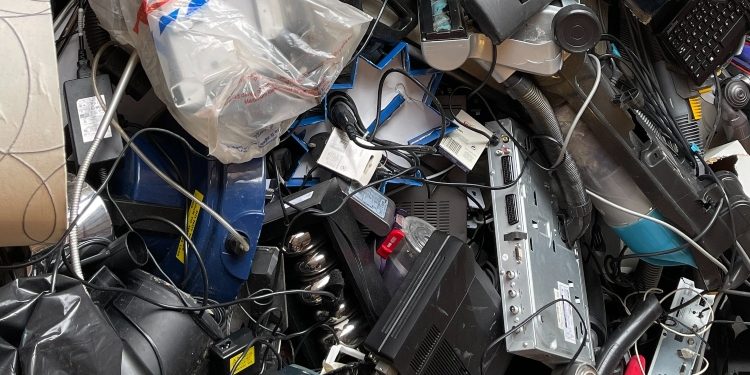Our modern economy is absolutely swamped with technology. Every week, it seems, a new must-have laptop, smartphone, monitor, printer or television arrives. And so, individuals and organisations seek to make an upgrade, in the process throwing away their older devices.
This creates a particular sort of problem: e-waste.
What is E-waste?
If you’re throwing away anything with plugs, circuit boards or batteries, then you’re generating electronic waste. These devices often contain highly toxic substances like mercury, lithium and lead, which, left in a landfill, can eventually find their way into the surrounding environment – both in water, soil and air. While this can be countered through the right air pollution solutions, the better alternative is to prevent it from reaching landfill in the first place.
There’s also a missed opportunity when it comes to e-waste. These devices often contain trace amounts of recyclable metals like copper, gold and aluminium. When they head to the landfill rather than the recycling plant, these metals are wasted.
On other hand, it must be said that recycling itself is not without its drawbacks. To begin with, it’s energy-intensive. For another, it’s opaque – recycling is often outsourced to foreign territories where environmental protections are laxer, and labour laws don’t offer protection.
To avoid all of these problems, we might therefore seek to extend the lifespan of a given device for as long as possible. If you can resell a device you no longer need, like a mouse, then you can be sure that the environmental harm will be minimised. On the other hand, you might seek to repair the device, or simply hold onto it for longer.
Most common contributors to E-waste
It’s difficult to make direct comparisons between territories when it comes to electronic waste since the problem is often measured in different ways. In some cases, it’s barely measured at all – but that needn’t imply that it doesn’t exist.
According to data from Eurostat, large household appliances account for more than half of the total collected electronic equipment in the EU. Croatia is the best-performing country in the 27, with Malta bringing up the rear. Britain produces more than its share of e-waste, too. According to a recent estimate, the first six months of 2021 saw the UK produce a mass of electronic waste that would outweigh fifteen Eiffel Towers.
How to recycle electronic waste
Electronic waste can be recycled at suitable recycling centres. You can consider any appliance that uses electricity to fall under the Waste Electrical and Electronic Equipment Category. Look for the crossed-out wheelie bin symbol.
What is being done?
Given the scale of this problem, you might wonder what we’re doing about it. A recent report from the Office for Product Safety and Standards has found an undesirable ‘circular economy’ of waste – wherein products are being exported overseas and then coming back in the form of cheap plastics, many of which contain dubious levels of harmful substances like lead.
So, the problem is on the government’s radar – but how this translates into policy and regulation remains to be seen.
David Prior
David Prior is the editor of Today News, responsible for the overall editorial strategy. He is an NCTJ-qualified journalist with over 20 years’ experience, and is also editor of the award-winning hyperlocal news title Altrincham Today. His LinkedIn profile is here.












































































